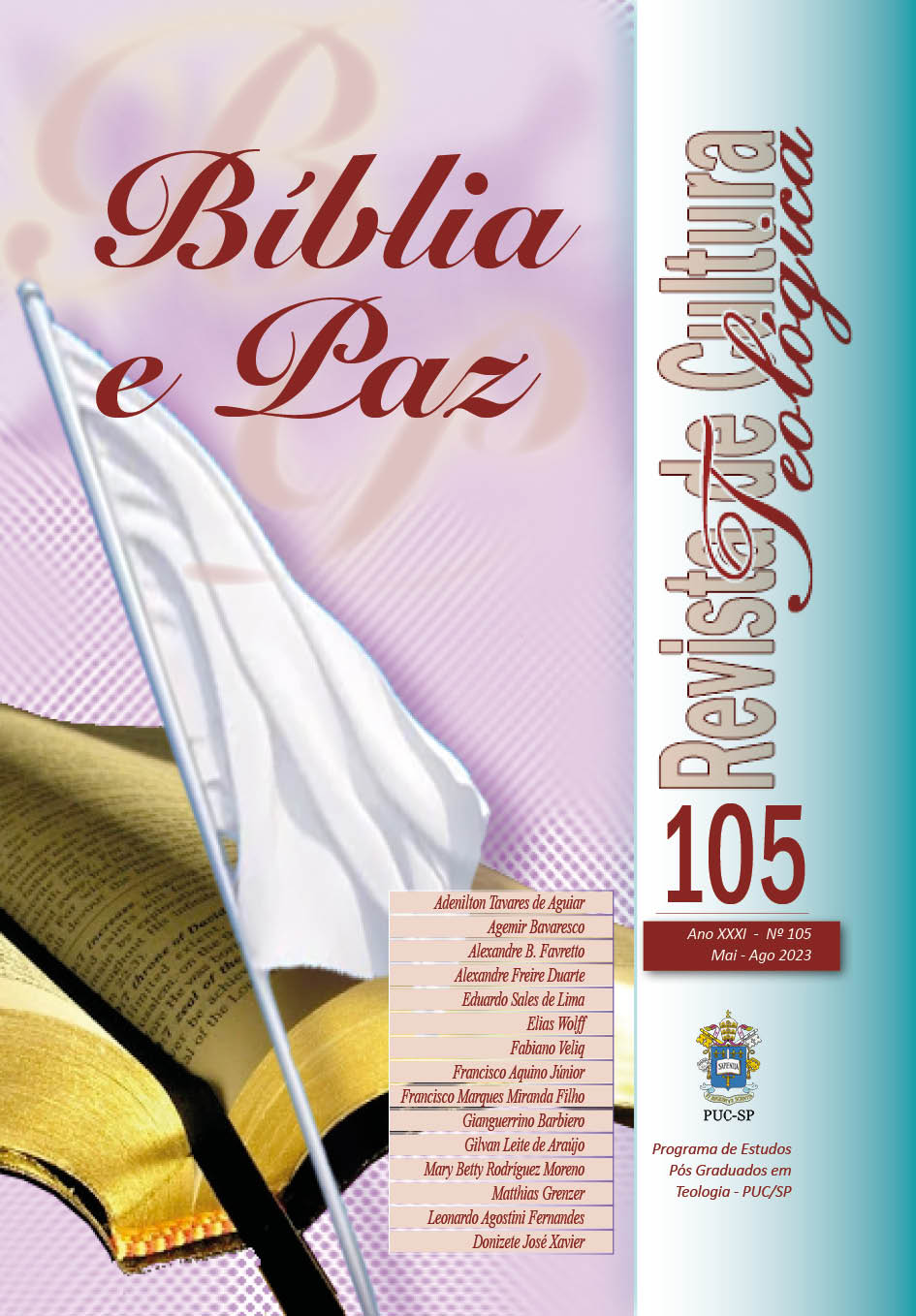Art, power and resistance
Neo-Assyrian Empire, Southern Levant and ethnogenesis of the Deuteronomic identity of Israel and Judah
DOI:
https://doi.org/10.23925/rct.i105.63069Keywords:
Neoassírio, Levante Sul, Poder, Resistência, Identidade, DeuteronômioAbstract
The period in which the initial formation of the deuteronomic identity of Israel and Judah takes place is situated in the context of the construction of the power zone of the NeoAssyrian empire. Assyrian imperial expansion included the occupation of the northern Levant, the dissolution of the Kingdom of Israel, and the relationship with the Kingdom of Judah in the form of a client kingdom. The Assyrians used various ways to express their power and established an exchange that took place in the economic, social, and cultural fields. Among the expressions of power were the use of texts and art in the construction of the central cities undertaken by some of the major NeoAssyrian kings, but also other instruments of prestige and favor to those appointed by the central kingdom to administer the conquered territories that became provinces. It is necessary to evaluate the impact of the Neoassyrian imperial agenda on the relationship with the conquered territories and the satellites in the Southern Levant, but, above all, to seek to understand the forms of resistance and how the changes that occurred in this period may be one of the elements of the formation of part of the Israelite identity present in the texts of the Book of Deuteronomy.
References
BELL, Catherine. 1992. Ritual Theory, Ritual Practice. New York: Oxford University
Press, 1992.
BELL, Catherine. Ritual: Perspectives and Dimensions. New York: Oxford University Press, 1997.
CROUCH, Carly L. The Making of Israel. Leiden: Brill, 2014a.
CROUCH, Carly L. Israel and the Assyrians - Deuteronomy, the Succession Treaty of Esarhaddon, and the Nature of Subversion. Atlanta: SBL Press, 2014b.
DURING, Bleda S. The Imperialisation of Assyria An Archaeological Approach. Cambridge; University Press, 2020.
FINKELSTEIN, Israel. State Formation in Israel and Judah: A Contrast in Context,
a Contrast in Trajectory. NEA , 62, p. 35–52, 1999.
HOLLOWAY, Steven W. Aššur is King Aššur is King Religion in the Exercise of Power in the Neo-Assyrian Empire. Leiden: Brill, 2002.
HUNT, Alice M. Palace Ware Across the Neo-Assyrian Imperial Landscape Social Value and Semiotic Meaning. Leiden: Brill, 2015.
KLETTER, Raz. Between Archaeology and Theology: The Pillar Figurines from Judah and the Asherah Studies. In The Archaeology of the Iron Age in Israel and Jordan. Amihai Mazar (ed.). Sheffield: Sheffield Academic Press, 2001, p. 179-216
PANITZ-COHEN, Nava. The Pottery Assemblage.” In Yavneh 1: The Excavation of the “Temple Hill” Repository Pit and the Cult Stands. With Contributions by David Ben-Shlomo, Amir Gorzalczany, Henk K. Mienis, Dvory Namdar, Ronny Neumann, Nava Panitz-Cohen, and Steve Weiner, ed. Raz Kletter, Irit Ziffer, and Wolfgang Zwickel. Fribourg Switzerland: Academic, 2010, p.110–45.
POSTGATE, John. N. 2007. The invisible hierarchy: Assyrian military and civilian administration in the 8th and 7th centuries Bc. In: Postgate, J. N. (ed.) The Land of Assur and the Yoke of Assur: Studies on Assyria 1971–2005. Oxford: Oxbow Books, p. 331–360.
RUSSEL, John M. Writing on the Wall The Architectural Context of Late Assyrian Palace. Indiana: Eisenbrauns, 1999.
TYSON, Craig W.; HERRMAN, Virginia R. Imperial Peripheries in the Neo-Assyrian Period. Colorado, University Press, 2018.
Published
How to Cite
Issue
Section
License
Copyright (c) 2023 Revista de Cultura Teológica

This work is licensed under a Creative Commons Attribution-NonCommercial-NoDerivatives 4.0 International License.
Os autores concedem à revista todos os direitos autorais referentes aos trabalhos publicados. Os conceitos emitidos em artigos assinados são de absoluta e exclusiva responsabilidade de seus autores.

